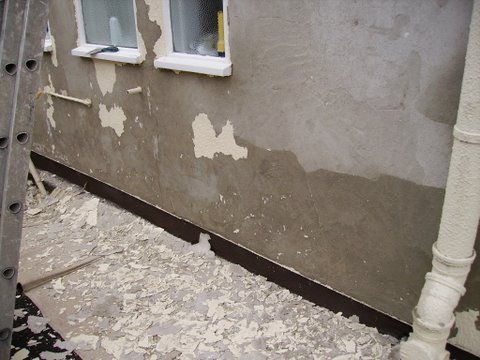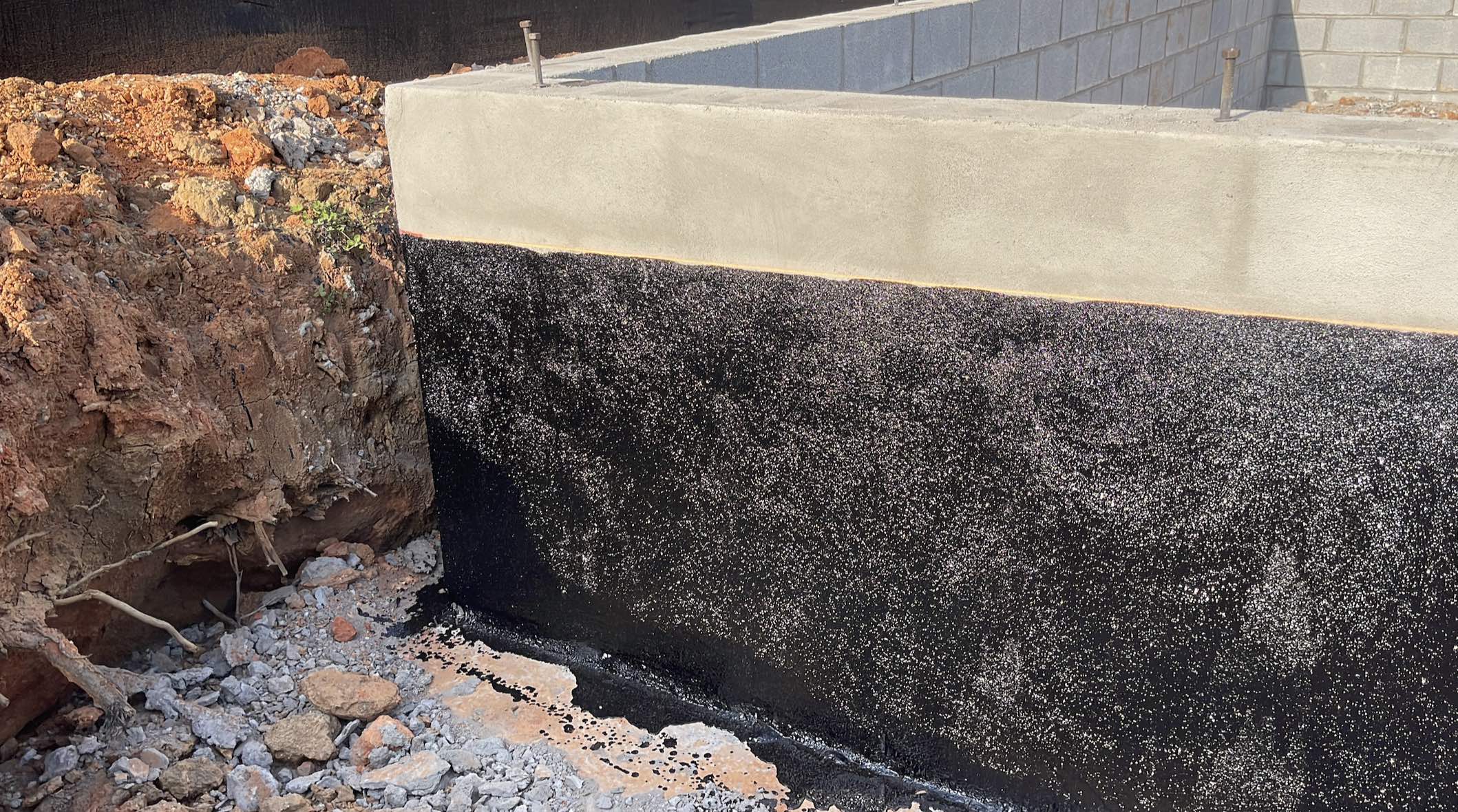Why professional damp proofing newcastle essential for structural protection
Why professional damp proofing newcastle essential for structural protection
Blog Article
Discovering the Numerous Methods and Solutions for Effective Damp Proofing
Wetness in buildings presents substantial challenges to both architectural stability and interior air top quality. Numerous strategies and remedies have actually emerged to fight this pervasive problem. From standard damp-proof membrane layers to innovative chemical therapies, each approach supplies one-of-a-kind advantages. Comprehending these choices is important for reliable dampness control. Selecting the right remedy depends on particular structure problems and needs, motivating additional exploration into the most efficient moist proofing methods available.
Recognizing the Root Causes Of Moisture
Dampness can emerge from various sources, comprehending these causes is crucial for reliable removal. Frequently, dampness stems from 3 main resources: climbing wet, passing through damp, and condensation. Rising damp occurs when groundwater takes a trip up with permeable products, such as brick or stone, typically as a result of an absence of an effective barrier (mould treatment newcastle). Penetrating moist is normally triggered by exterior variables, consisting of roof leaks, malfunctioning seamless gutters, or harmed wall surfaces, allowing water to penetrate a residential or commercial property. Condensation, on the other hand, results from excess wetness airborne, typically worsened by poor air flow and temperature level distinctions, resulting in water droplets basing on surfaces. Recognizing these underlying concerns is important, as each kind of moisture calls for a customized approach for remediation. Correct evaluation aids in establishing the most reliable services, ultimately safeguarding the architectural honesty of a building and enhancing indoor air top quality
Traditional Damp-Proof Membrane Layers

Chemical Damp-Proofing Solutions
Chemical damp-proofing options offer an ingenious strategy to preventing moisture intrusion in buildings. These techniques normally entail the application of liquid chemicals that pass through masonry and form an obstacle versus climbing moist. Frequently made use of chemicals include silanes, siloxanes, and other water-repellent agents that respond with surface products to develop a hydrophobic layer.The application procedure usually requires exploration openings right into the walls, infusing the chemical option, and allowing it to heal. This approach is specifically helpful for older frameworks where traditional damp-proof membranes may be not practical. Chemical damp-proofing can be much less disruptive and more cost-efficient than substantial renovation projects.While reliable, these solutions depend on correct application and ecological conditions for peak performance. mould removal newcastle. Normal maintenance and tracking are vital to ensure the durability of the damp-proofing treatment. In general, chemical damp-proofing stands for a flexible alternative for guarding structures versus moisture-related damages
Tooth Cavity Wall Surface Building And Construction Techniques
Dental caries wall building and construction techniques offer many benefits, especially in dampness control and power performance. By incorporating an air space in between 2 layers of masonry, these walls properly alleviate water access while enhancing insulation. This combination not just shields frameworks from moisture but also adds to minimized power consumption.
Advantages of Dental Caries Walls
When thinking about reliable damp proofing methods, the advantages of cavity wall surfaces attract attention prominently. Cavity wall surfaces consist of 2 separate layers, developing an air gap that successfully decreases dampness penetration. This style decreases the danger of wetness, as the external wall works as an obstacle versus rainfall and water access. In addition, cavity walls improve thermal insulation, which adds to energy effectiveness by reducing warmth loss. They likewise provide sound insulation, aiding to develop a quieter indoor atmosphere. The air void permits for ventilation, which aids in moisture control and minimizes the chance of mold and mildew development. These benefits not only improve the overall comfort of a building however likewise add to its durability and architectural stability.
Wetness Control Approaches
Effective dampness control methods are important in cavity wall surface building to guarantee lasting security against moisture. One primary technique involves the unification of weep holes, which promote water drain from the cavity, protecting against build-up. Additionally, using breathable membranes can assist manage wetness degrees while allowing caught vapor to run away. Appropriate positioning of insulation is also essential, as it ought to not block drainage courses. Making sure that the external fallen leaves of the cavity wall surface are constructed with water-resistant products improves overall longevity. Routine upkeep checks are important to determine any kind of clogs or damage early, securing the framework's honesty. Ultimately, a combination of these techniques forms a robust defense against wetness invasion in tooth cavity wall surfaces.
Insulation and Power Performance
Insulation plays a crucial role in enhancing energy performance within tooth cavity wall construction. By including shielding products, these walls create a thermal barrier that minimizes heat loss and reduces power intake. Reliable insulation not just assists preserve a steady indoor temperature but additionally alleviates the danger of dampness, as it avoids condensation within the wall cavity. Various strategies, such as using stiff foam boards or mineral wool, can be used to accomplish suitable insulation performance. In addition, proper installation is necessary to assure that spaces and voids are minimized, which can or else endanger energy efficiency. Inevitably, a well-insulated tooth cavity wall surface contributes significantly to overall sustainability and reduces home heating and cooling prices for property owners.
External Damp Proofing Approaches
External wet proofing methods are crucial for securing frameworks from wetness infiltration. Two reliable strategies include the application of water resistant membranes and the setup of French drains. These solutions assist alleviate water build-up and protect the honesty of structures.
Waterproof Membrane Application
While numerous methods exist for avoiding moisture ingress, the application of waterproof membranes continues to be a very effective outside moist proofing method. These membrane layers are normally made from products such as polyethylene, rubber, or modified asphalt, supplying a robust barrier versus water infiltration. The installment procedure involves applying the membrane layer to the exterior surface areas of walls or foundations, making sure complete coverage to prevent leaks. Proper bond and sealing at joints are essential to making best use of effectiveness. Waterproof membranes can be applied in different types, including liquid finishings and sheet membranes, enabling for versatility based on the certain requirements of the structure. This approach not only protects structures from wetness yet also enhances their long life and architectural honesty.
French Drain Setup
One efficient method for managing groundwater and protecting against dampness buildup around a structure's foundation is the setup of a French drain. This water drainage system contains a trench loaded with gravel and a perforated pipeline that redirects surface water far from the foundation. Proper installation needs careful planning, ensuring that the drain inclines far from the framework to help with perfect water circulation. Furthermore, the area of the drainpipe is vital; it ought to be placed in areas vulnerable to pooling or excess wetness. Routine upkeep, consisting of clearing up debris from the crushed rock and ensuring the pipeline stays unobstructed, is essential for long-term efficiency. Eventually, a well-installed French drain can greatly decrease the threat of water-related issues in foundations and basements.
Inside Waterproofing Strategies
Inside waterproofing approaches are important for protecting a building's interior from moisture seepage and potential water damages. These strategies usually include the application of specific products and methods designed to develop a dampness obstacle within the framework. One typical strategy is using water-proof finishings or sealants on walls and floors, which avoid moisture from permeating surfaces.Additionally, mounting interior water drainage systems, such as sump pumps, can effectively handle water accumulation in basements and crawl rooms. An additional method entails the use of vapor barriers, which are mounted to prevent moisture activity from the ground into living spaces.Moreover, attending to any kind of cracks or voids in wall surfaces or structures with suitable sealants guarantees an extensive defense against water intrusion. By executing these indoor waterproofing techniques, property owners can significantly reduce the threat of mold and mildew development, architectural damages, and other moisture-related concerns. Appropriate implementation of these strategies is essential for long-lasting security and structure integrity.
Routine Maintenance and Assessment Practices
Routine maintenance and inspection methods are crucial for ensuring the long-term efficiency of wet proofing options in any kind of structure. Regular checks enable homeowner to determine early indications of moisture intrusion, such as peeling paint, mold and mildew development, and moldy smells. These signs can signify underlying problems that need instant attention.Inspections must be performed at the very least yearly, concentrating on prone areas like basements, crawl spaces, and outside walls. During these analyses, residential or commercial property proprietors must analyze sealants, drainage systems, and air flow to confirm they function correctly.Additionally, maintaining seamless gutters and downspouts is crucial, as clogged up systems can bring about water build-up near the structure. Implementing a regular upkeep routine, together with timely fixings, can significantly expand the life-span of damp proofing measures and secure the structural honesty of the building. Proactive steps inevitably add to the overall health and wellness of the living setting.
Regularly Asked Questions
How Much Time Does Damp Proofing Generally Last?
The duration of damp proofing performance varies, normally lasting in between 20 to half a century. Elements such as application high quality, ecological problems, and upkeep practices significantly affect the durability of the moist proofing therapy.

Can I Damp Evidence My Home Myself?
The specific contemplated the usefulness of DIY damp proofing. With proper study and the ideal products, it is feasible. They also recognized the significance of specialist support to assure long-lasting effectiveness and avoid future issues.
What Are the Indications of Ineffective Damp Proofing?
Signs of inadequate moist proofing consist of relentless mildewy odors, visible mold development, peeling paint, damp patches on wall surfaces, and timber decay - damp removal newcastle. House owners should deal with these issues without delay to stop more damage and health and wellness concerns
Does Damp Proofing Affect Indoor Air Top Quality?

How Much Does Specialist Damp Proofing Expense?
Expert damp proofing costs vary considerably, commonly ranging from $1,000 to $5,000 depending on the property's size, the extent of the moist issue, and picked methods. Each scenario calls for a customized assessment for precise prices. Typically, dampness stems from 3 primary resources: increasing wet, permeating damp, and condensation. When considering efficient wet proofing methods, the advantages of tooth cavity walls stand out plainly. Outside wet proofing approaches are essential for shielding structures from wetness seepage. While various approaches exist for avoiding moisture ingress, the application of water-proof membrane layers remains a more info very efficient external wet proofing technique. Indications of inadequate wet proofing include consistent mildewy odors, visible mold and mildew growth, peeling paint, damp spots on walls, and timber degeneration.
Report this page